2018 Range Rover Velar Review
Modern appeal and on-road satisfaction don't deter this new Rangie off-road.
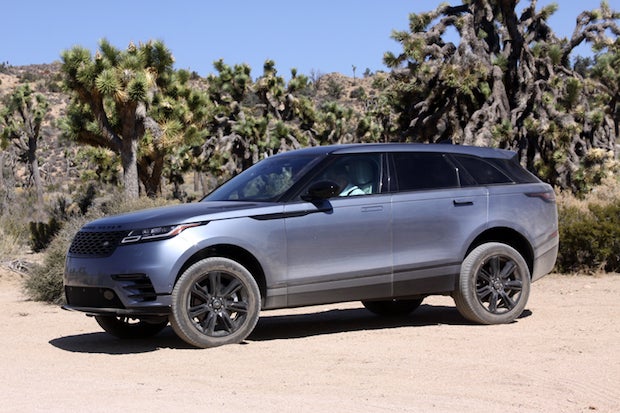
It's a conundrum, or a riddle, or perhaps a poke in the ribs: how does Off-Road.com (ostensibly the most read off-roading website on the internet, full of trucks and quads and dirt and Dana 60s) review a high-zoot new vehicle like the Range Rover Velar? Will we know the car is running if we cannot smell its exhaust? Can we describe tactile satisfaction that's not covered in grease? Might we accuse the Velar of being haunted by its head's up display? Perhaps we will strike gold, if only we drag our knuckles deeply enough; or perhaps we are not the wrench-wielding cavemen you thought.
Interestingly, the Range Rover Velar is similarly enigmatic. How does a distinctly street-oriented sporty fashion-wagon such as this attract the upscale buyers prone to Range Rover ownership without abandoning the honest modicum of trail-worthiness necessary to wear the badge? Perhaps we are not so poorly suited for this job.
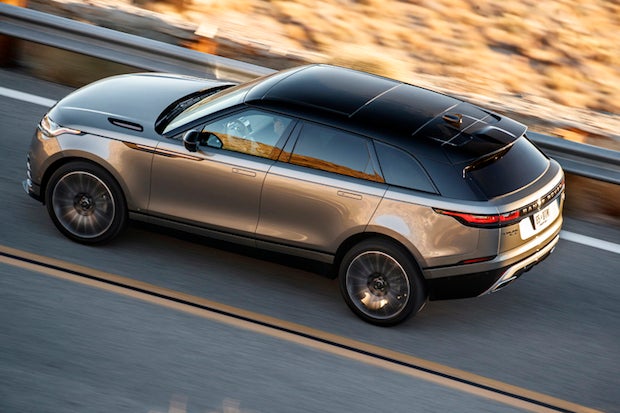
Where They've Been: From England, With Love.
If you've been paying attention, you've heard the name "Range Rover", "Land Rover" and/or neutral quotesJaguar" in the automotive news a bit in the past decade. To sum things up for the not-Landie-crowd in the Off-Road.com audience, both Land Rover - the parent brand for Range Rover - and Jaguar were purchased (from Ford) by the Indian manufacturing conglomerate Tata about 10 years ago.
Reflections on the 180-degree karma of the formerly British automakers being acquired by a corporate inhabitant of a former British colony aside (as well as any snickering about its brand name), Tata has been good to both Rover and Jag. Word is, Tata has taken a hands-off approach to the brands: "Do your thing," said Tata, "... and make us money!" Both brands realized a 20 percent improvement in sales in 2016 versus 2015, have seen 15 percent more by September 2017, and are expanding each brand's footprint and product."
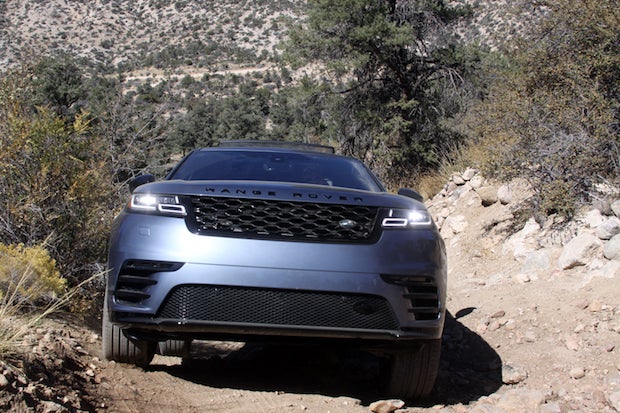
Comes a Velar: Why It Matters.
With this growth has come the impetus for Range Rover to expand its line. This, the Range Rover Velar, is a distinct effort by the company to target shoppers demanding Porsche Macan, Audi Q and Volvo XC60-sized high-appeal and status-standard luxury wagons.
When you regard the rest of the Rangie line - the full-sized Classic and Sport (what most folks probably think of when picturing a Range Rover) and the smallish and somewhat toe-shaped Evoque, the Velar falls between, in size, options, price and audience. However, the Velar isn't just a bean-countered mean of big and smallish: it's the rare case where the as-manufactured vehicle turned out very similar to its original concept (to Range Rover chief design officer Gerry McGovern's credit). Its appearance is an enthusiastic exercise by McGovern, a project reflective of his affection for modernist limitedism [... Just created that word - like it?].
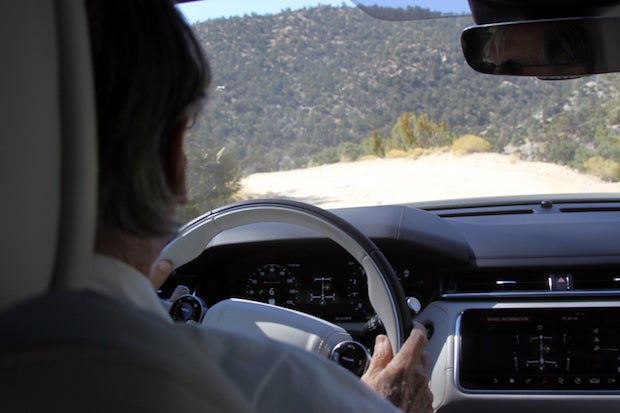
We'll avoid the cliché of calling the Velar austere; its ethic is much closer to determinedly subtle. An English sort of appeal that sneaks up on you. It's adventurous in a smooth, relaxed manner. The Velar has real lines, with enough curve to be attractive but not blobular, but isn't festooned with squares pretending they're circles. Bodylines appear and depart easily, terminating neatly at the edges. Your eyes slide off the Velar's shoulders (especially the front), and its rounded rakishness never leaves you wondering if the guy who penned the front met the guy who drew the back. Features like its recessed door handles that might appear gimmicky on some cars don't come across that way on the Velar; they make sense.
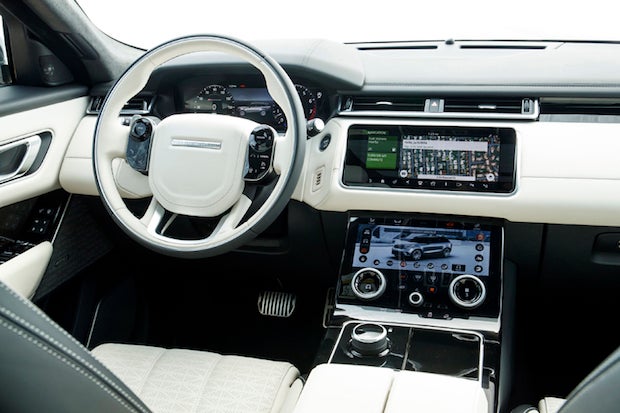
Sit in It.
The Velar's interior does not repeat the exterior's level of success in tying together all of its elements, but this is not a slight - the interior does succeed, just less so. It is light, airy and bigger than it appears. The seats are great. Two virtual gauges dominate the dash (and are available as a head's up display), and two retractable dials govern operation of the expansive - and attractive - 10-inch touch-screen center console.
The dash is as reductive as can be, but there's still a lot going on behind those displays. We blame the sheer amount of information, interrelation and interaction needed by a driver and passenger to control the mechanisms of modern luxury vehicles for this. However, with so many bells and buttons, it's impossible not to have some buttonphobia crop up. Whatever happened to the luxury of simplicity? That said, for the sheer number of ways there are to inferface with the Velar's controls, its interior makes a considerable go of limiting confusion and clutter.
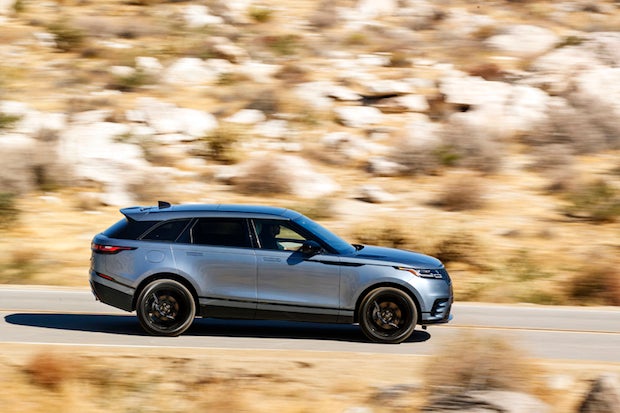
Of course, to each his own: if you prefer to drive the dashboard more than the car, just be sure to crash into yourself and no one else. A responsible Velar owner will take the time to configure the eye-pleasing and thorough dash and console controls to their intuition before driving, not while.
Observations from Inside the Velar:
- Daylong driving produced virtually no seat fatigue. The Velar's seats and surfaces are expansively adjustable. Interior surface qualities are satisfying, with the modern, squishy-firm feel common to upscale makers.
- The Velar is available with leather or a nifty suede-wool "Kvadrat" seating surfaces.
- The back seats were roomier than anticipated, and comfortable for a six foot-plus male.
- Modernity run amok: there was no 3.5mm jack in the cabin to connect an audio player. Like the current trend of some European automakers not to offer AM radio, the failure to include a basic audio jack is a case of form undermining satisfaction.
- The Velar's sound and infotainment systems were reliably pleasing to the ear.
- It may be a tall-guy thing, but the use of the Velar's manual-shift controls put at least one tester in an uncomfortable shoulder-arm-hand position that made going fast less intuitive.
Put the Velar in Drive and Watch it Go.
Our delerious ramblings about your engagement with the Velar aside (Put the gun down, Mr. Bond), we know what you're after: how's it drive? Surprisingly - as it weighs about 4500 pounds despite the extensive use of aluminum (the frame is about 80% aluminum, with the leftovers made of steel and magnesium) - the Velar feels nimble and turns crisply. Your author brought the whip to bear on several curve complexes (kindly mapped out by the folks from Range Rover), and the Velar not only dove in without hesitation, it didn't wash out mid-bend, and was easy to exit fast turns on-throttle.
Drivetrain and suspension options:
- A mechanically supercharged 3.0-liter V6 making 380 hp and 332 lb-ft torque.
- A turbodiesel 2.0-liter straight four that twists out 180 hp and a pleasing 317 lb-ft.
- The baseline turbo gas straight-four 2.0-liter, which makes 247 hp and 269 lb-ft at a peaky 5500rpm.
- All three engines: a smooth-shifting eight-speed ZF automatic. No snowmobile (CVT) transmissions here.
- The "four-wheel" drive is all-wheel drive. All lockers are not lockers at all - they're brake and computer-managed.
- The blown V6 comes standard with the smooth and unobtrusive air suspension, while the coil-sprung suspension is standard on both four-cylinder models.
- Wheels are available from 18-inch to 22-inch sizes.
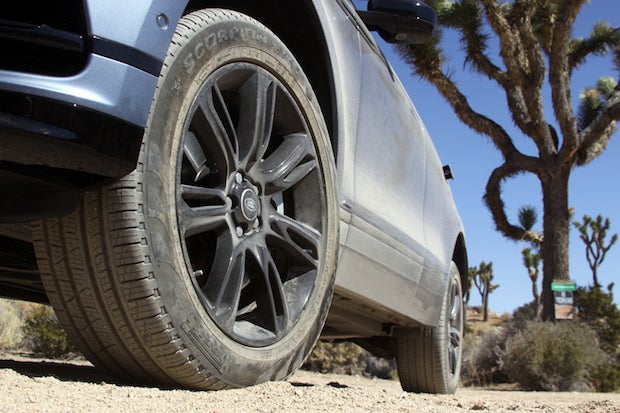
Some handling credit is certainly due the Pirelli Scorpion tires on our tester and the firm (and quiet) unibody, but there is no shortage of electronic wizardry going on behind the curtain. Pay no attention to the computer-monitored variable damping, active braking all-wheel drive, nor the electric throttle (or electrically-boosted steering, which is blissfully rack-and-pinion). To argue the other side of the coin, both the steering and throttle, electronic or not, were very controllable and didn't exhibit any of the unsettling reinterpretation that has made drive-by-wire the bane of fast guys worldwide. Again, credit to the folks from Range Rover for getting these things right: no sense in angering fast guys, nor enabling the bad habits of low-info motorists.
Thoughts for your consideration:
- The Velar's "S" mode (for "Saucy"!) keeps the SUS in gear, even when punching redline – good control for those who know what the loud pedal is for.
- While not reassuring off-road, the short sidewall of the Pirelli tires were a fine compromise between on-road tossability and noise levels.
- We found that the spring-based suspension options for the Velar were more predictable on-road. However, the air-based active suspension was very smooth on the freeway, and appeared well-trained and intuitive on-trail.
- The 3.0-liter V6 is the punchiest of the three engine offerings, but the diesel was eager to work when wound up. The four-cylinder gas baseline engine was no slouch, but had to be kept on its toes.
- Some of the Velar's fanciest computer-controlled off-road capabilities are only available on the V6 higher-priced models - choose wisely.
- The Velar's digital inclinometer/suspensionometer/torqueometer and front and rear cameras help keep passengers entertained.
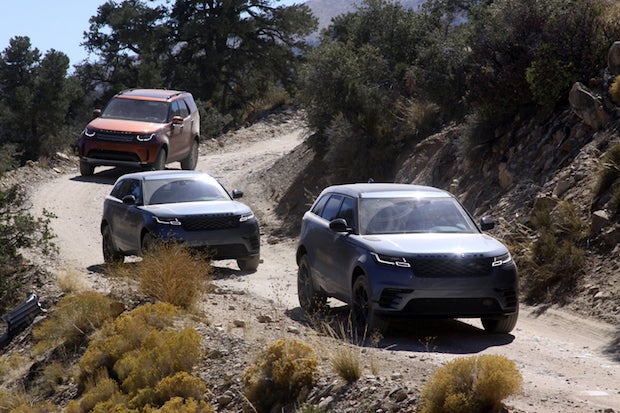
Now, for the use and/or abuse of the Velar on-trail. Have no fear, they got worked, and to the Velar's credit, it worked. While it doesn't appear trail-oriented on the outside, nor sport features that would identify it as a T-R-U-K truck, the designers and engineers behind this wagon-come-‘froader didn't allow its road-oriented bias to deter them from imbuing the Velar with capabilities necessary to four-wheel competently. It is a Range Rover, after all, and has a reputation to maintain.
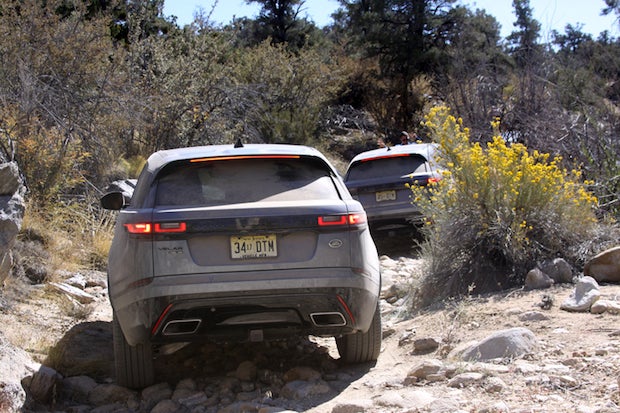
In a case like this, where actual off-roadin' features (high ground clearance, aggressive tires with heavy sidewalls, pliant suspension, or a predictable mechanical differential locker of any sort) were conspicuously absent, modern electronics and processor-monitored traction aids stood in and made the most of things. The air suspension-equipped Velars can be raised or lowered several inches to match performance requirements, and do so in tandem with computer-controlled drivetrain and suspension settings that can oversee everything from hill descent, the lockup of the rear axle, low-traction launches, and the need to occasionally hang a baloney in the air. The Velar is never going to be a crawler or at home riding fence, but it will get you to camp.
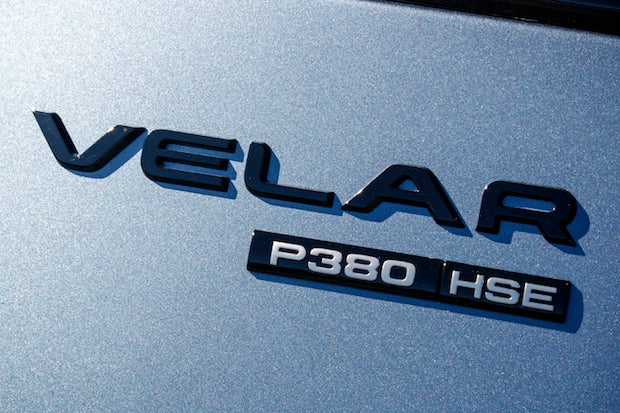
Additional observations that didn't fit elsewhere:
- Pricing runs from below $50,000 to almost $90,000, depending on your thirst for status.
- In 2020, all new Landies will have an electrified powertrain option. The company has committed itself to "reducing CO2", whatever that means. Plants and greenery worldwide have rioted in protest.
- There will be a Velar Sport plug-in - the "P400E" - with a gas four-cylinder working in league with an electric motor.
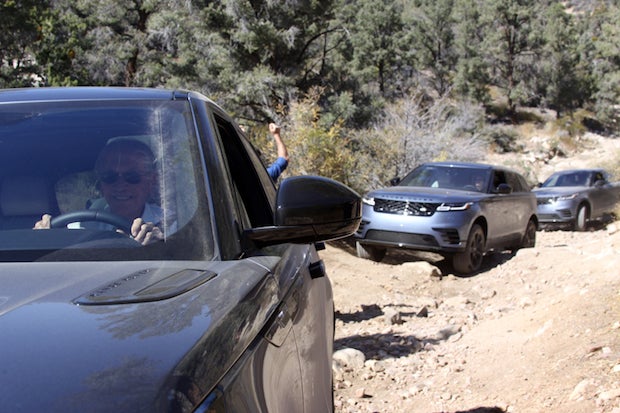
The Verdict
Thus, the Velar: a "modernist reduction, a pared back" collection of Range Rover style dictates that aim for potential Range Rover shoppers both on and off-road. This highbrow midsize sport-utility truckster retains an emotional link with Rover history by sporting a revered codename and enough on-trail capability to be worthy of a range Rover badge.


 Your Privacy Choices
Your Privacy Choices